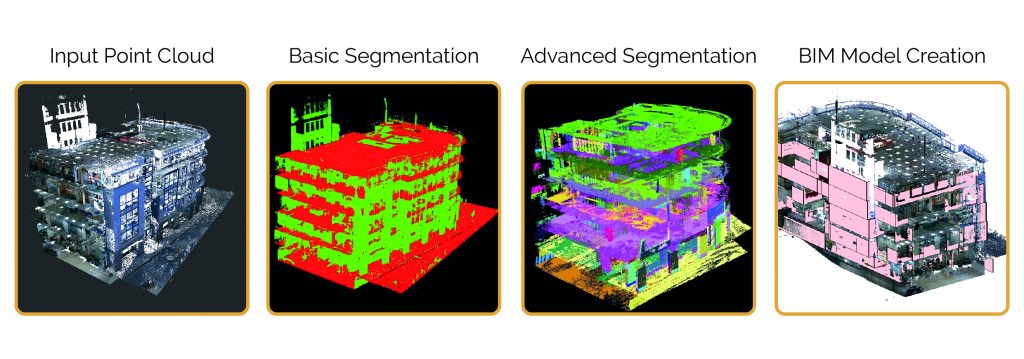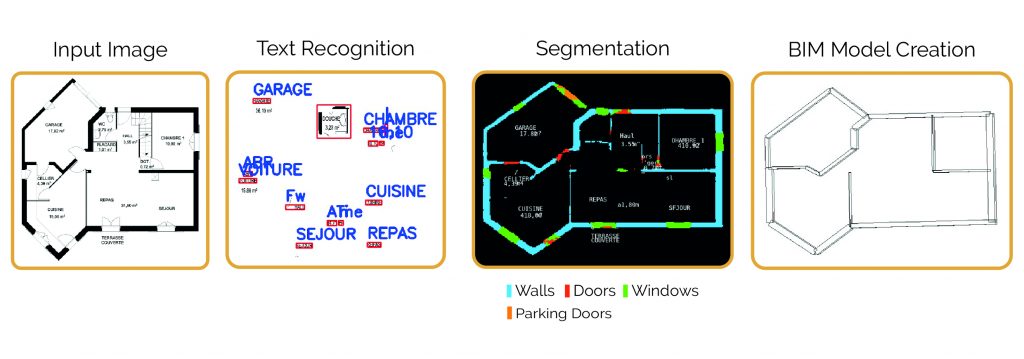How can Artificial Intelligence change and improve the architecture, engineering and construction sector?
Today we paint the future in our minds as a world primarily running on machines that can “think and act” like humans and take the best decisions for us. Artificial Intelligence (AI) is the field where we design such systems to be capable of portraying the ideal concept of intelligence by acting rationally when faced with a specific situation rather than following a set of rules defined explicitly by the program. AI has many branches, wherein each aims to achieve an intelligence of a certain kind.
Machine Learning (ML) is a branch where we programme to identify patterns in datasets and make future decisions following those patterns. The system “learns” in the process of identifying better patterns and making improved decisions every time – hence the name ML.
Major approaches implemented under this sub-field are regression, classification, support vector machines, neural networks, clustering and generative models.
In Natural Language Processing, we aim to provide machines with the intelligence of interpreting a language and performing tasks related to speech. For example, recognising handwriting, speech recognition, text to/from speech. It also explores some higher-level tasks other than processing, such as grammar, sentiment analysis, summarisation, etc.
There is also the branch of Computer Vision, where we teach the algorithm to “see” and detect or classify objects in images (2D) or point clouds (3D).
There are many more sub-fields of AI like Knowledge Representation and Reasoning, which formalise characteristics of intelligence in different ways.
In this sense, the definition of intelligence is progressive and it is said that “AI is whatever hasn’t been done yet”. Implementing AI technologies will help us in both automating complex tasks and improve our performance accuracy. AI revolutionised many industries and is continuing to expand its grounds.
How can AI change and improve the AEC industry?
The architecture, engineering and construction (AEC) industry has recorded the lowest productivity rate over the years. It seems that it has been stuck in a time warp.
Is it a matter of cost or the presence of ambiguity that is preventing us from adopting recent AI technologies?
The AEC has a substantial component of development which is “data”, and yes, here the data is in enormous quantity. How? Valuable data originates from all over the place, from design plans to construction processes, equipment and many more. The main problem of the AEC is the absence of initiative to collect, organise and utilise this data. The AEC industry can take advantage of the data to tackle structural inefficiency problems and deliver faster and better results.
AI is in the limelight and its application in the real world is rapidly increasing. In our industry, AI can be applied to solve an array of problems such as: creating simulations using reinforcement learning to increase security in building layouts, generating design possibilities or even predicting the missing data in scanned point clouds using Generative Adversarial Networks (GANs), and classification of 3D models too.
It can also be used for short/long-term building energy system behaviour prediction, pavement stress detection and classification, and crack prediction of recycled concrete. Finally, we can also find AI helpful in scheduling and planning the AEC processes.
DiRoots has employed AI technologies on two R&D projects. The first one to automate the conversion of point clouds to 3D Revit models (which traditionally is extremely time-consuming) using unsupervised ML and another one to generate 3D models from floor plan images using supervised Deep Learning (DL).
Point Cloud to BIM (P2B)

Due to noise and variations of objects available in point clouds, the results of P2B were not precise enough. A DL approach was required for precise classification and segmentation of the point clouds.
However, maintaining and using enormous datasets to train the neural network requires a lot of processing power, which implies huge hardware costs. Hence, we decided to put this project on hold.
From Floor Plans to 3D models

Pitfalls and challenges of Artificial Intelligence
Besides the innovations that AI brings, it also has its hurdles. Some vendors claim they understand concepts in AI, do they? AI can be either an advantage or a pitfall when you are just starting. Generally, the main challenges are:
Availability of quality datasets: The better the data, the more precise the outputs of the AI systems are. Often the available datasets are of poor quality and it is crucial to clean and curate them to enhance results validity. AI learns from data, thus garbage in, garbage out.
Implementation costs: AI is usually expensive to implement and maintain on a large scale. There is also a limited number of available experts in the field. Should you adopt AI?
AI is all around us, from our personal devices to the systems that manage our cities. All the companies that want to remain competitive must adopt AI technologies to automate their processes. It is peak time now for the AEC industry to heavily invest in AI.
Jose Oliveira
Founder
DiRoots
Tel: +44 (0) 770 100 3171
Twitter: @DiRoots17
LinkedIn: DiRoots
Facebook: DiRoots17/
Youtube: DiRoots
Instagram: @diroots_17/
Please note: this is a commercial profile.













